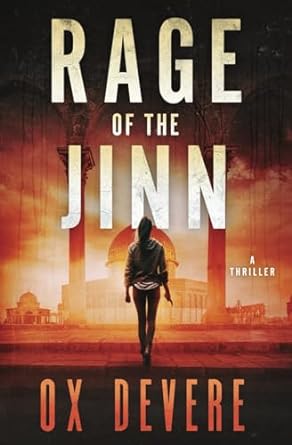The Bottom Line: An intoxicating, globetrotting historical thriller that is tailor-made for fans of Douglas Preston and Dan Brown.

Inspired by the 2019 real-life fire that destroyed significant portions of Paris’ Notre Dame Cathedral, Rage of the Jinn imagines what excavators involved in the church’s restoration might have found after the blaze. Namely, a mysterious sarcophagus that had gone undetected for centuries. Researchers quickly determine that it was placed in the 14th century in a location that is close to the choir, suggesting that it must have been someone of great importance.
But the sarcophagus is unusual in almost every way. Instead of lead, it is made of iron. Its exterior is lined with Bible verses written in French. But inside are inscriptions in French as well as Portuguese, Latin, Olde English, Spanish and even Arabic. It also contains an urn, and nearly a pound of salt. To reveal what happens when the sarcophagus is opened would rob readers of the book’s most exhilarating chapters, but suffice to say that author Ox Devere’s cinematic prose conjures up a scene that rivals the opening of the Ark of the Covenant in Raiders of the Lost Ark.
While unleashed evil wreaks havoc on Paris, CIA operatives Ridley Samaras and partner Henri Michel fear the end of humanity as we know it. But in order to stop the calamity, they must first understand it. To do so, they embark on a global investigation that takes them to Tel Aviv, Jerusalem, Cairo, Normandy and other exotic locations. Following a trail of clues derived in part from ancient lore and texts, they discover that the Knights Templar once imprisoned malevolent Middle Eastern spirits called jinn.
Blending archaeology, anthropology, history, religion and horror, Devere has managed to create a story that feels fresh despite using well-worn tropes. Devere smartly nods to them (“Never open the cursed sarcophagus. No one learns from the movies, do they?”) while covering new ground with intricate lore of his own imagination. He does this in part by blending elements of the world’s great religions into a story that threatens all of them simultaneously.
In Ridley, he has created a likable protagonist with the grit of a former Navy SEAL, but the warmth to snuggle up to her rescue dog, Maddie. While Ridley is strong enough to carry the story on her own, she doesn’t need to. Devere has filled the book with numerous alluring characters, many of whom appear only fleetingly before disappearing into the vastness of this meaty, labyrinthian tale. In particular, Ridley’s chemistry with Henri crackles throughout, even when their conversations turn mystical in nature (“Do you believe that there are supernatural beings under the Temple Mount?”). Let’s hope Devere brings Ridley back for an encore.

